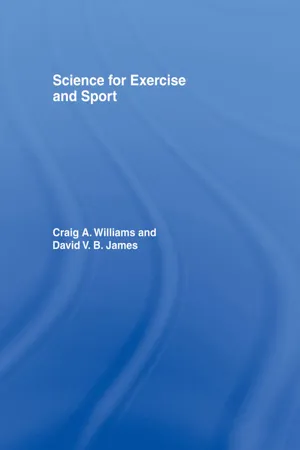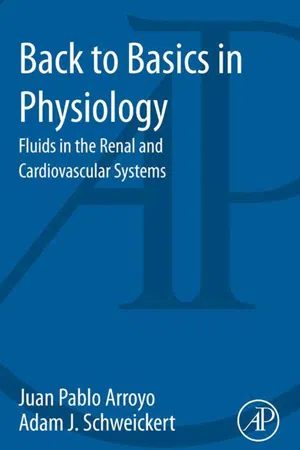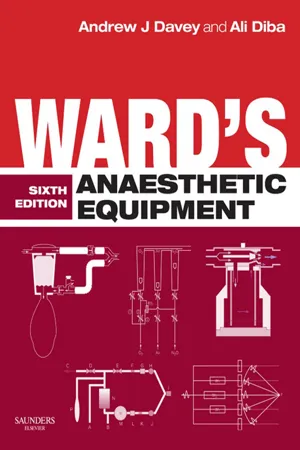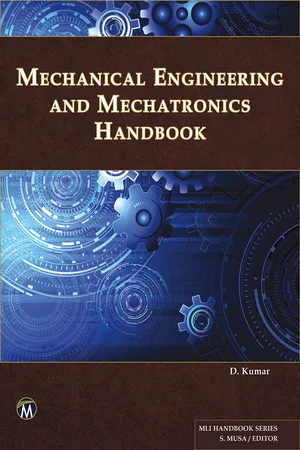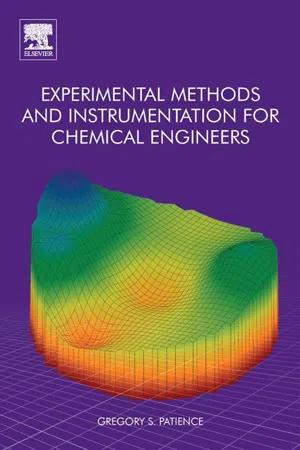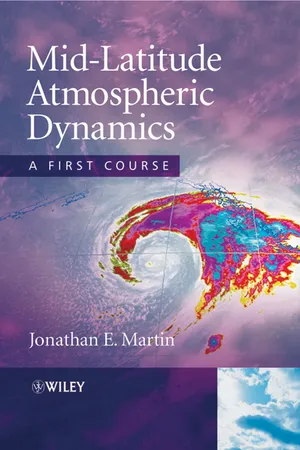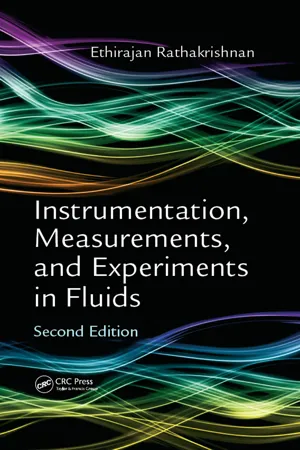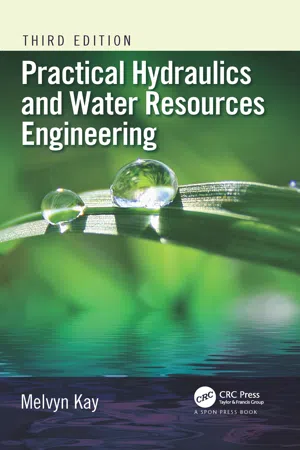Physics
Force and Pressure
Force is a push or pull acting on an object, causing it to accelerate or deform. Pressure is the force applied per unit area. Force is measured in newtons (N), while pressure is measured in pascals (Pa). The relationship between force and pressure is that pressure is the result of a force distributed over an area.
Written by Perlego with AI-assistance
Related key terms
9 Key excerpts on "Force and Pressure"
- eBook - ePub
- David James, Craig Williams(Authors)
- 2014(Publication Date)
- Routledge(Publisher)
rigid bodies. Since the human body is not a rigid object, the laws should be applied with caution.Physical states, Force and Pressure
Forces can be applied to solids. For rigid solids, forces can be applied in the form of compression or tension forces. Compression forces act to decrease the length of a solid, whilst tension forces act to increase the length (i.e. stretch a solid). The effect of a force (i.e. stress) acting on a solid is known as strain. The degree to which a solid changes length as a result of an applied force gives the strain. Tension forces, but not compression forces, can also be applied to non-rigid solids, such as a piece of elastic (see Chapter 4 ).Pressure can act on a solid, liquid or gas. However, gas must be contained before pressure can be exerted. The ideal gas laws (see Chapter 2 ) illustrate the effect of pressure on a gas.Units of Force and Pressure
A quantity with a magnitude (i.e. size) only is known as a scalar quantity. Force is a vector quantity, which means it has a directional component in addition to a magnitude. A force is visualised through the action it has on an object. Specifically, acceleration is the kinetic (i.e. movement) effect associated with the action of a force. The magnitude of a force is equal to the product of mass (kg) and acceleration (m·s 2 ) (see Equation 5.1 ). The unit of measurement of force is the newton (N).Whilst forces are important in exercise and sport, it is often a combination of the magnitude of the force and the time over which it acts which determines performance. The product of force (N) and time (s) is known as impulse (Ns):Pressure is the force applied per unit area, and is calculated by dividing force (N) by area (m2 ) (see Equation 5.3 ). The unit of measurement of pressure is the pascal (Pa), where 1 Pa is equal to 1 N·m−2 .Although the pascal is the unit of pressure that is recognised by the international system of units, other units of pressure are widely used. For example, pressure is often measured with a column of liquid, where the height of the liquid in the column reflects the pressure exerted upon it. Since mercury is a very heavy liquid, it is often the liquid of choice. This is because with a heavy liquid a smaller column is required to demonstrate graduations of pressure. Consequently, pressure is often recorded in millimetres (mm) of mercury (Hg) (i.e. mmHg). Since atmospheric pressure is often determined with a column of mercury, the usual units used are mmHg. It is known that atmospheric pressure varies around 760 mmHg at sea level. The unit barometric pressure (bar) is related to the unit mmHg, with 1.01325 bar being equivalent to 760 mmHg (see Equation 5.4 ). The bar is frequently used when measuring ambient pressure in various environments, especially high-pressure environments such as occur in diving. There are 760 mmHg to 100 000 pascals (or 100 kPa) (see Equation 5.5 - eBook - ePub
- Craig Williams, David James, Cassie Wilson(Authors)
- 2008(Publication Date)
- Routledge(Publisher)
In the study of exercise and sport, it is the effect of force application on the human body which is of interest. In engineering, the usual safety factor built into materials, and associated physical structures, is over two times the force that is applied on a regular basis. This level of caution is known to result in a low probability of a failure because of mechanical stress. Similar safety factors are built into materials and structures that have to withstand pressure (i.e. force per unit area), such as gas cylinders. An extreme engineering example is a lift, where it is important that failure does not occur! A cable supporting the lift can usually withstand eleven times the maximum load specified by the manufacturers (Diamond, 1993). Interestingly, the human body also seems to have been designed (evolved) with a safety factor in many of its structural and physiological systems. Examples in the human body include the lungs and kidneys, of which we have two when one is enough. In relation to forces, bones and tendons do not normally break until forces of two to five times peak natural force has been applied (Diamond, 1993).Throughout this chapter the emphasis will be placed on the effect of the application of Force and Pressure on the human body. Once the concepts of Force and Pressure have been defined, the various units used in measurement of Force and Pressure will be examined. The application of Force and Pressure produces a mechanical stress, and the consequences of such stress will be addressed. Since forces can only be applied to solid objects, whereas pressure can be applied to all physical states, the information in this chapter is closely related to that in Chapters 2 –4 .SCIENTIFIC PRINCIPLES OF Force and Pressure
Movement of an object (i.e. motion) depends on the application of force. Force is the effect that causes an object to start or stop moving as well as increasing or decreasing the rate of motion of a moving object. The application of a force can cause a body to accelerate either positively or negatively. Sir Isaac Newton (1642–1727) defined the laws of motion - eBook - ePub
Back to Basics in Physiology
Fluids in the Renal and Cardiovascular Systems
- Juan Pablo Arroyo, Adam J. Schweickert(Authors)
- 2013(Publication Date)
- Academic Press(Publisher)
Chapter 1 ? Well, if we generate pressure at one end of the tube and there is less pressure at the other end (because no one is blowing air into that side), we’ve generated a pressure gradient. There is more pressure on one side than the other. But what exactly is pressure?2.2 Concept of Pressure
If you were to cut something with a knife, would you use the sharp end or the flat end? Pressure is considered the force per unit area. The mechanics of pressure with a solid is simple. If we push down with the knife, the force is applied in a direction perpendicular to the surface of the object we’re cutting. The sharp edge has less area to it than the sides of the knife, so we generate more pressure with the same amount of force. Therefore, if we wanted to generate more pressure, using the same amount of force, we’d use the sharp end. Solids are a little more straightforward because the molecules are tightly bonded together. If we push down perpendicular to the object we’re cutting, we create a pressure force in that same direction. However, with a liquid or a gas, pressure becomes a little bit trickier. If we have a container filled with a gas, the molecules in the middle are banging around and experiencing forces in all different directions, but the molecules up against the wall are banging into the walls perpendicular to the inside wall of the container. If we looked at a very small part of this container wall over a short amount of time, we would see that the molecules hit at random angles. But if we were to watch long enough, we would see that, on average, the force is perpendicular to the surface. This is true of all the surfaces of the container. The force acting on the wall of the container is what we call pressure. Now, if we were to try and compress a gas by shrinking the container or stuffing more gas in, we could do so. In the meantime, we would increase the pressure inside the container in all of these perpendicular directions as more frequent and more forceful collisions would happen between the gas molecules inside the container. Fluids, however, are not compressible! If you try and compress a fluid in a container, the liquid molecules will hit up against the container wall in a perpendicular fashion just like with gases, but because the liquid molecules are more tightly bound together, there’s no extra room for more. So when you attempt to compress a liquid in a container you get even larger amounts of pressure (Figure 2.1 )! The pressure felt against the container by this fluid, particularly when at rest, is called hydrostatic pressure (hydro =water; static =at rest). Any fluid that’s in a container would leave that container if the container had a hole in it. The pressure that exists as a result of the fluid NOT - eBook - ePub
Ward's Anaesthetic Equipment
Ward's Anaesthetic Equipment E-Book
- Andrew J Davey, Ali Diba(Authors)
- 2012(Publication Date)
- Saunders(Publisher)
2 Measurement of pressure and gas flowPaul BeattyChapter contentsForce, pressure and flow Atmospheric pressure and partial pressure Absolute, differential and gauge pressures Methods of measuring pressure Measurement of gas flowAny system for delivering anaesthetic gasses requires the consistent and accurate measurement of gas flow and pressure. In order to be able to understand the detailed design of modern anaesthetic machines, this chapter will consider how such measurements are obtained and the basic physical principles involved.Force, pressure and flow
Force is that which causes an object to move or, more accurately, to accelerate. Once it is moving, Newton’s Laws tell us that it will continue to move in a straight line at a constant rate unless some other force is applied to it. The SI unit of force is the Newton (N) , which is defined as the force that causes a mass of 1 kg to accelerate by 1 metre per second per second (m s−2 ). Other units of force occasionally used are the kilogram force (kgf) and the pound force (lbf). These are forces equivalent to the force exerted by the earth’s gravity on masses of a kilogram and a pound, respectively.Pressure is force per unit area over which the force acts, i.e.In any gas or liquid, pressure acts in all directions equally, whereas force acts in a given direction. For example, in a full hypodermic syringe, the liquid can be pressurized by applying a force to the plunger of the syringe. This is applied in the direction of travel of the plunger. However, if there were a leak in the barrel of the syringe, the liquid would squirt out sideways from the leak, as well as from the syringe outlet (Fig. 2.1 - eBook - ePub
- D. Kumar, Sarhan M. Susa(Authors)
- 2022(Publication Date)
- Mercury Learning and Information(Publisher)
intensity of pressure (or simply pressure), in the absence of shearing stress, isp =where dF represents the resultant force acting normal to an infinitesimal area dA . If the total force F acts uniformly over the entire area A , then p = F /A . Pressure has the dimensions of [FL− 2 ] and is usually expressed in N/m2 (pascal), bar or atmosphere.1 bar = 105 N/m2 = 100 kPa1 atm = 101.3 kPa5.5.2. Pascal’s lawAn important and unique property of hydrostatic pressure is reflected in Pascal’s law, which states thatIntensity of pressure at a point in a fluid at rest is same in all directionsConsider a small wedge-shaped element of stationary fluid and assume that the element has a unit depth perpendicular to the plane of the paper (Figure 5.13 ). The element is acted upon by the normal pressure forces and the vertical forces due to weight. Let pFIGURE 5.13 and it acts through the center of gravity. Since the fluid element is in equilibrium, the forces in the horizontal and vertical directions must balance.x, py, and p θ be the pressure intensities on the faces AB, BC, and AC, respectively. Then,Resolving the forces in the x -direction:Let the size of the elemental system approach smaller and smaller dimensions; then the gravitation force (weight) which diminishes as the product of two dimensions (dx and dy ) can be neglected in comparison with the pressure forces for which the diminishing effect is proportional to be reduction in single dimension (dx ). Thus, in the limit,This result is independent of the angle θ - Gregory S. Patience(Author)
- 2013(Publication Date)
- Elsevier(Publisher)
Pressure measurement is a critical factor not only in the oil and gas industry but also for the operation of process equipment including reactors, distillation columns, pipelines, and for the measurement of flow rate. It is a scalar quantity and equals the perpendicular force exerted on a surface with the units of force per surface area:(4.1)Pressure together with temperature, flow rate, and concentration are the essential macroscopic properties required to operate chemical processes. Various units are frequently used to report pressure and some common units and their conversions are reported in Table 4.2 .Table 4.1Antoine Constants of Various Compounds (T in °C, P in kPa)Table 4.2 Common Pressure Units and Their ConversionsAtmospheric pressure is a result of the hydrostatic head of air and equals 101 325 Pa (at sea level and a clear day). However, the Aristotelian view was that air was weightless. It wasn’t until the Renaissance that Toricelli challenged this postulate. To avoid being accused of witchcraft and sorcery, he worked secretly and invented the mercury (“quicksilver”) barometer to conduct experiments in an instrument measuring only 80 cm in height compared to a water column of over 10 m that was commonly used at the time. Pascal was the first to demonstrate that pressure changed with elevation by measuring the height of mercury in a barometer at the base of the Puy de Dome and along its height to the summit at 1464 m.Together with columns of liquids, other forms of pressure common to the process industry include the pressure of gases in vessels, vapor pressure, dynamic pressure, and pressure drop across pipes, flow meters and through porous materials. At constant pressure and a fixed mass, Boyle’s law states that for an ideal gas, the volume and absolute pressure are inversely proportional:(4.2)or(4.3)As the pressure of an ideal gas increases, its volume decreases proportionately. Charles’ law describes the relationship between the volume and temperature of an ideal gas at constant pressure:(4.4)The volume increases proportionally with temperature. Amontons’ law relates pressure and temperature and can be derived from Boyle’s and Charles’ laws:- eBook - ePub
Mid-Latitude Atmospheric Dynamics
A First Course
- Jonathan E. Martin(Author)
- 2013(Publication Date)
- Wiley(Publisher)
apparent forces. Two important apparent forces to be investigated in this chapter are (1) the centrifugal force and (2) the Coriolis force. We begin this examination by considering the fundamental forces.2.1 The Fundamental Forces
Understanding the fundamental forces is essential to gaining insight into the behavior of the fluid atmosphere. Most people have a solid intuitive feel for the gravitational and friction forces since both are so widely recognized as manifest in our daily experience. As it turns out, the effects of the often less familiar pressure gradient force are equally ubiquitous and readily detectable. We begin our examination of the fundamental forces by considering the nature of this pressure gradient force.2.1.1 The pressure gradient force
In order to examine the pressure gradient force (PGF) we will consider the pressure exerted by the atmosphere on sides A and B of the infinitesimal fluid element illustrated in Figure 2.1 . The pressure exerted on sides A and B arises from the fact that random molecular motions compel molecules to strike the sides. Each time a molecule strikes the side of the fluid element, a certain amount of momentum is transferred to that side. The total momentum transfer is the sum of all the individual momentum transfers. The total momentum transferred each second defines the force exerted by the atmosphere on the side of the fluid element. Dividing this total force by the area of the side of the fluid element defines the pressure that is exerted on that side. The volume of the fluid element is given by V = δx δy δz and its mass is given by M = ρδx δy δz where ρ is the density of the fluid. Let us define the pressure at the center of the fluid element to bep(x0, y 0 , z 0 ) = p 0 - Ethirajan Rathakrishnan(Author)
- 2020(Publication Date)
- CRC Press(Publisher)
impact pressure. The total and static pressures are used for computing the flow velocity.Since pressure is intensity of force, it has the dimensionsForce Area== [ MM LT− 2L 2L− 1T]− 2and is expressed in the units of newton per square meter (N/m2 ) or simply pascal (Pa). At standard sea level condition, the atmospheric pressure is 101325 Pa, which corresponds to 760 mm of mercury column height.2.2.2 Temperature
In any form of matter the molecules are in motion relative to each other. In gases the molecular motion is a random movement of appreciable amplitude ranging from about 76 × 10−9 m under normal conditions to some tens of millimeters at very low pressures. The distance of free movement of a molecule of a gas is the distance it can travel before colliding with another molecule or the walls of the container. The mean value of this distance for all molecules in a gas is called the molecular mean free path length. By virtue of this motion the molecules possess kinetic energy, and this energy is sensed as temperature of the solid, liquid, or gas. In the case of a gas in motion it is called the static temperature. Temperature has units kelvin (K) or degrees celsius (degC), in SI units. For all calculations in this book, temperature will be expressed in kelvin, i.e., from absolute zero. At standard sea level conditions the atmospheric temperature is 288.15 K.2.2.3 Density
The total number of molecules in a unit volume is a measure of the density ρ of a substance. It is expressed as mass per unit volume, say kg/m3 . Mass is defined as weight divided by acceleration due to gravity. At standard atmospheric temperature and pressure (288.15 K and 101325 Pa), the density of dry air is 1.225 kg/m3- Melvyn Kay(Author)
- 2017(Publication Date)
- CRC Press(Publisher)
b . The water pushes on the sides of the tank and in this case pushes outwards and downwards. Newton’s second law says that this produces a corresponding upward force on the water and this is transmitted to the base reducing the force due to the weight of the water. So, in this case the force on the base is less than the weight of the water in the bucket.Clear? If so then you are well on your way not only to understand the important difference between Force and Pressure but also to appreciate the significance of Newton’s contribution to our understanding of the way in which our water world works.2.6.2 Balloon problem
One more ‘absurdity’ to test your understanding. Two identical balloons are connected to a manifold and blown up independently so that one is larger than the other (Figure 2.8 ). When valve 3 is closed and valves 1 and 2 are opened, the air can flow between the balloons to equalise the air pressure. The question is – What happens to the balloons?Figure 2.8 Balloon problem.You might expect the air to flow from the larger balloon to the smaller one, so they both become the same size. But this is not what happens. The larger balloon, in fact, gets larger and the smaller balloon gets smaller. The reason for this is again explained by the difference between pressure and force. The larger balloon has a much greater surface area than the smaller one and so the pressure inside the larger balloon is less than in the smaller balloon. So, when the two balloons are connected together by opening the valves 1 and 2, the air flows from the smaller balloon into the larger balloon thus making the larger balloon even larger and the smaller balloon even smaller.Do not confuse size with pressure. If you are not convinced or you are still confused, try the balloon experiment by making up a small manifold using some plastic pipes and laboratory taps, and see for yourself.
Index pages curate the most relevant extracts from our library of academic textbooks. They’ve been created using an in-house natural language model (NLM), each adding context and meaning to key research topics.
